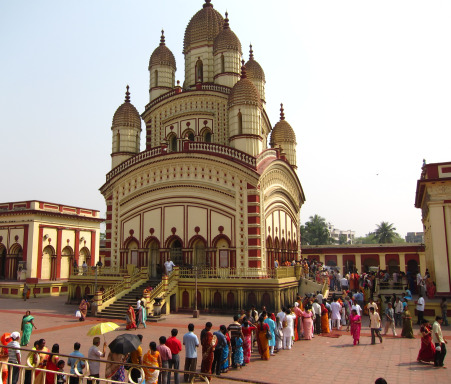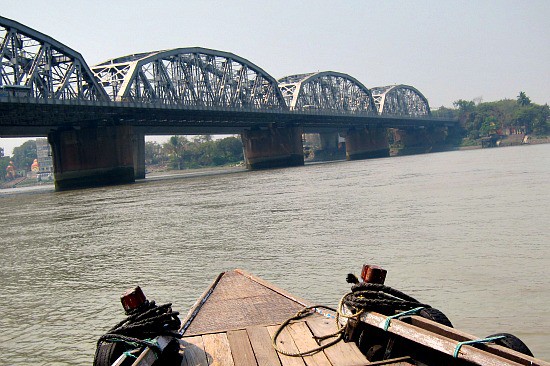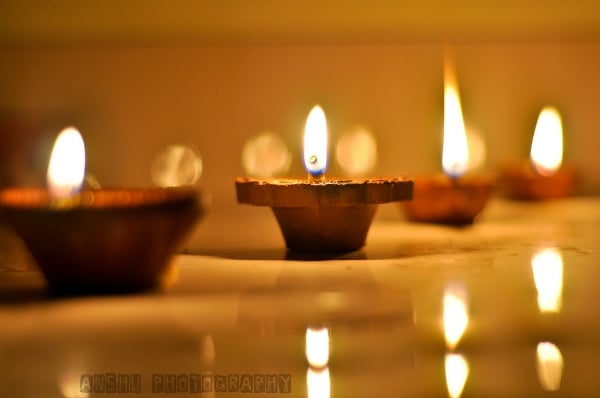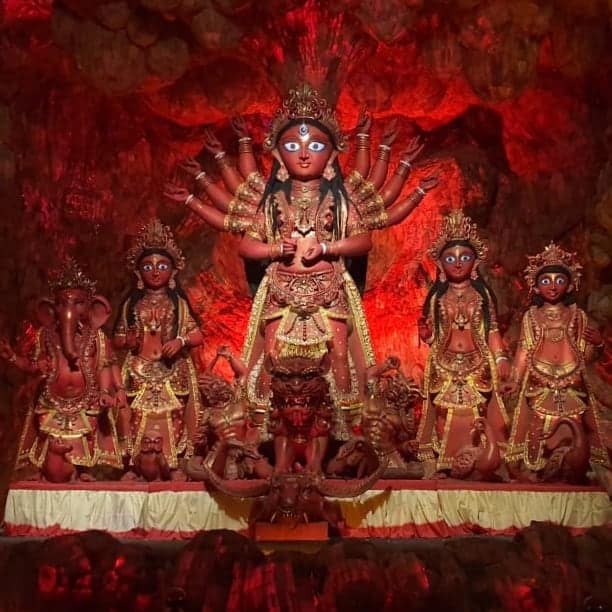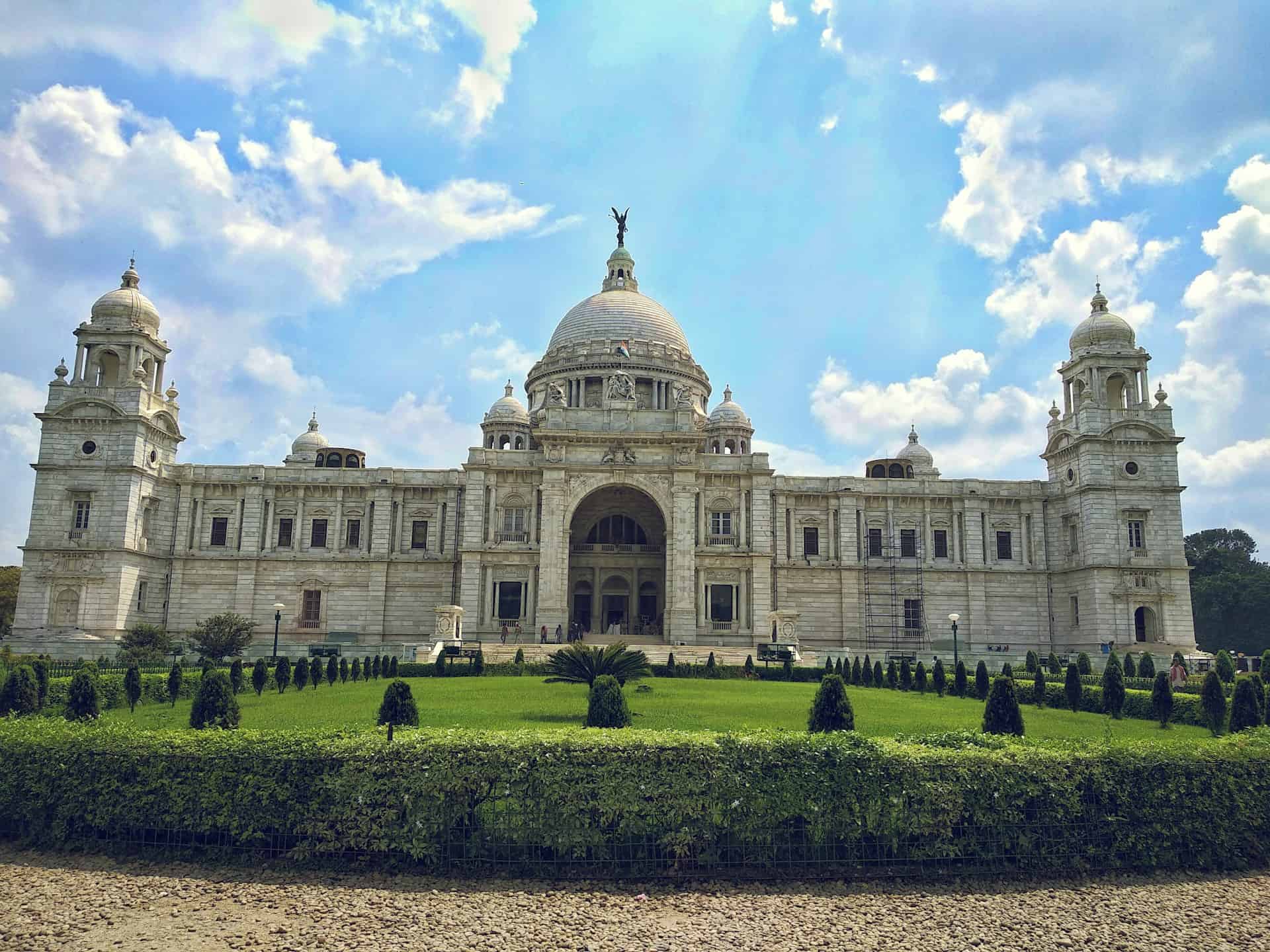
Table of Contents
Best places to visit in Kolkata: An insider’s guide
Guest post by Kolkata local Bedabrata Chakraborty.
Kolkata is known as The City of Joy. It’s the capital of West Bengal and a blend of sights, sounds, feels, and colours. Some parts of the city are modern while some are steeped in history. It could therefore be a little overwhelming to first time visitors to Kolkata.
In fact, I am a Kolkata lad and yet, at times, I wish there is some clearer direction in the eclectic mix. So, for the benefit of anyone curious about Kolkata tourism, here are my top tips about things to do in Kolkata. I have tried to include the best places to visit in Kolkata from my perspective as a local. But I’m always open to discovering more places.
Where to stay in Kolkata
A favourite place to stay in Kolkata is the Elgin Fairlawn Hotel, a historic property that exudes charm and is brilliantly located among the shops and cafes of Sudder Street, and close to Park Street and the top tourist attractions. The Lalit Great Eastern is a slick hotel built on the site of a historic property. It has a nice outdoor pool and some of the rooms are grand indeed! You can never go wrong with a Taj hotel of course and the Taj Bengal is perfect example — a beautifully designed hotel, it’s also landmark in Kolkata. Another landmark is the Oberoi Grand, an icon on the landscape of Kolkata for more than a century (note it is currently undergoing renovation).
Historical places in Kolkata
Kolkata, or Calcutta as it was called then, was the capital of India for most of the British rule. It therefore boasts beautiful colonial architecture — and most are functional and well-maintained to this day. While the capital was moved to Delhi in the year 1911, Kolkata is visibly steeped in history. There are many temples mosques, churches, museums, parks, and river-fronts that, combined, make Kolkata a traveller’s delight.
Art and culture
Given the high standards of educational and intellectual pursuits in Kolkata, the city is called the cultural capital of India. The esteemed poet and philosopher, and the first Nobel Laureate from India (as well as Asia), Rabindranath Tagore, and the Oscar winning film director Satyajit Ray both hail from this city. Kolkata is still the hub for music, arts, and theatre in India. Classical artists have to go through the rite of passage of performing before audience in Kolkata in order to establish themselves at the national level.
Handloom and handicraft
Kolkata is a treasure trove of beautiful cotton and silk handloom and handicrafts that are manufactured in the towns and villages of Bengal. The taant sari, Baluchari sari, khaddar fabrics and sholapith (Indian cork) and terracotta sculpture pieces are must-buys. Most of these items are still sold at traditional markets where you chat up the seller over a cup of tea.
The food and cuisine of Kolkata is legendary
Kolkata is the hub for the most delectable sweets and desserts in India. The biryani in Kolkata is a unique style of Mughlai cooking that is not available elsewhere in India. The street food of Kolkata can be fodder for a standalone article. Moreover, Kolkata is still the most affordable city in India in terms of food. You can visit Kolkata just for a gastronomy trip.
Tram cars in Kolkata
Kolkata is the only city in India that has tram cars. Started in the year 1902, it is still a popular mode of transport among locals. In today’s fast paced lives, a leisurely ride in the tram car, meandering through the busy city, is sheer romance. I had my first date in the tram car! From personal experience, it is a well-tested recipe for sparks to fly.
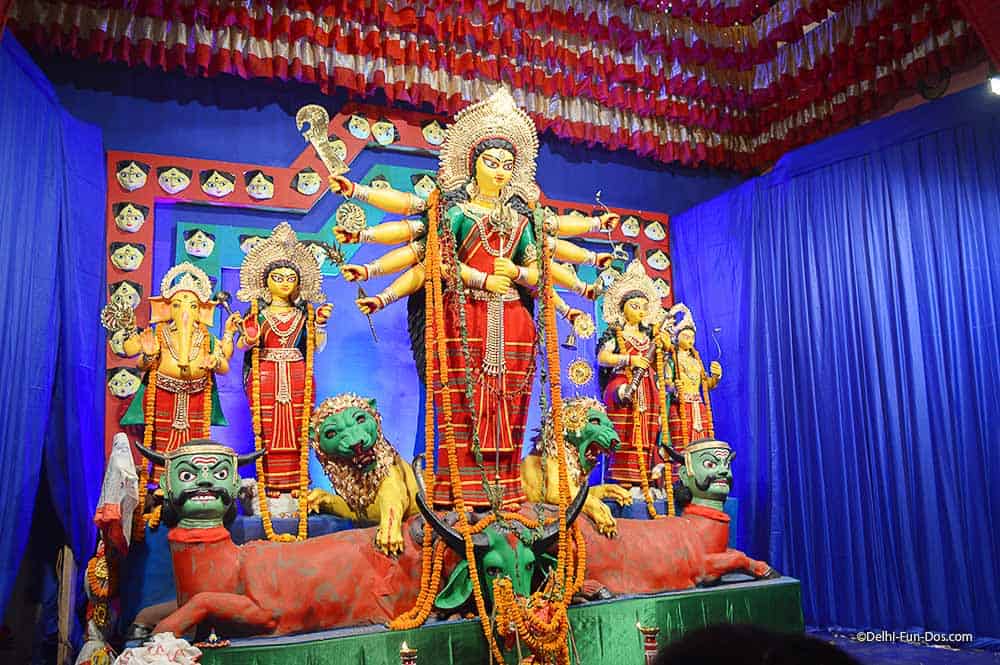
Durga Puja in Kolkata
Durga Puja is an autumnal festival to worship Goddess Durga. While this is a Hindu festival, the celebrations in Kolkata are of grand proportions that break religious boundaries and adopt a secular flavour. The whole city is covered with lights, and marquees are erected in various parks and neighbourhoods to install the Durga idol. The festival lasts for five days. People walk the streets in colourful clothes and the city is awake all five days and nights. The celebrations reach carnival proportions and Kolkata becomes a living art gallery!
In addition to a host of tourist places in Kolkata, there are a host of tourist attractions in the visit that can be reached by bus, cars or local trains. This heading is discussed in more details later in this post. Read this post, a Complete Guide to Durga Puja in Kolkata for everything you need to know to attend.
Best places to visit in Kolkata
If you are a planning a trip, you should keep at least 3 or 4 days on hand for Kolkata sightseeing. While the places are not far, most tourist activity here require some time. Kolkata has a robust public transport city by way of bus, trams, yellow taxis, radio cabs, local trains, metro and ferries across Ganga. One may also choose to rent a car but if you want a more authentic experience, go with the flow. While the local language is Bangla, most people understand and speak a workable amount of Hindi and English so even if you are not conversant in Bangla, you should be fine. Solely based on my personal favourites, below is a list of the most popular places to see in Kolkata.
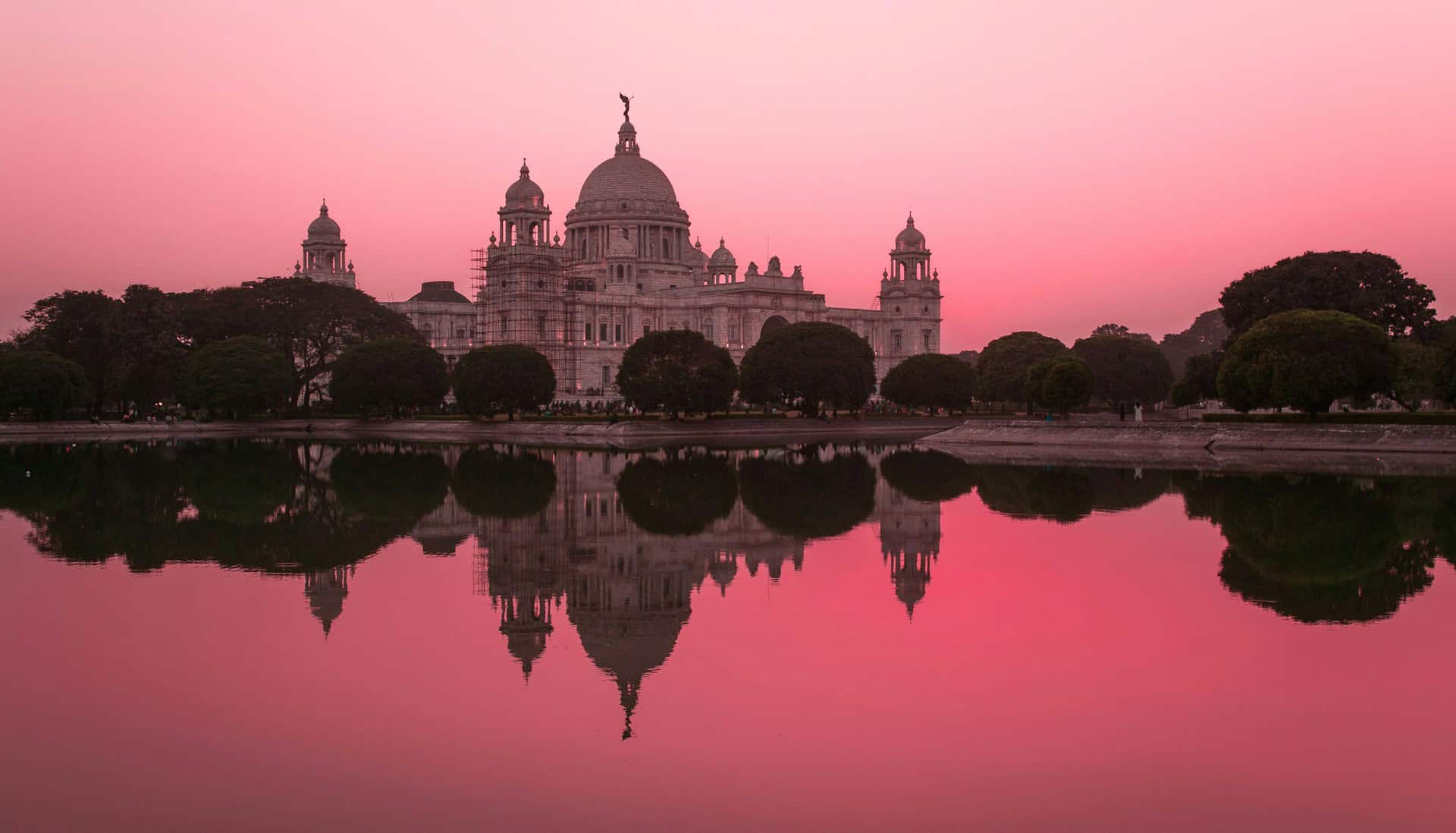
Victoria Memorial
Dedicated to the memory of Queen Victoria, this magnificent marble structure in the heart of Kolkata carries an extensive collection of marble statues, artifacts, oil paintings, and old manuscripts. It is now a museum that also has a dedicated Calcutta gallery. The well-maintained sprawling lawns around the building are called the lungs of the city.
Indian Museum
The Indian Museum bears the honour of being the largest and perhaps the oldest museum in Asia. It has a host of galleries with a rich collection of objects of art and natural history. As a child we loved the dinosaur skeleton and the mummy remains on display here. As an adult, I tend to gravitate towards the ancient art and textile galleries. The Indian Museum is not far from the Victoria Museum so if you are a museum buff, this museum can easily take you the entire day.
Birla Planetarium
The Birla Planetarium is located opposite to the Victoria Memorial. They have regular shows on astronomy, space science and Indian philosophy in connection with stars and planets. The projection is on a spherical ceiling which makes the visual so much more real. The show times are divided as per audio language – English, Bangla, and Hindi. I first visited this place as a six-year-old and was totally awestruck. I visited the Planetarium again last year and it did not fail to engage me as an adult.
St. Paul’s Cathedral
If you are in the Victoria Memorial – Birla Planetarium area, you are in the vicinity of another beautiful building, St. Paul’s Cathedral. The cathedral was completed in the year 1847 and is a great en of example of Gothic architecture in India. I especially love the powerful organ they have been playing here since forever. St. Paul’s Cathedral holds the best Christmas service in Kolkata that I have attended. The sound of the organ bellowing under the high ceilings gave me goose bumps. Because of the surging crowds, the Christmas service these days is restricted to the members of the parish.
Howrah Bridge
Howrah Bridge is iconic to Kolkata. It is a suspension-type, balanced cantilever bridge on the River Hooghly and is adjacent to Howrah Station, the largest and oldest railway station in the city. No wonder it sees heavy traffic and footfall daily. Howrah Bridge is a beautiful piece of industrial architecture and has been featured by the Hindi film industry, aka Bollywood, in a loads of movies since the 1950s. If you are not clicked with Howrah Bridge in the backdrop, others would doubt if you have really been to Kolkata.
Kalighat Temple
The Kalighat Temple ranks high among tourist places in Kolkata. The shrine houses a very unique and abstract idol of Goddess Kali and is considered to be an extremely holy Hindu pilgrimage. The temple in its present form was built in early 1800s in the Chala or Bengal hut style. It is located in the southern part of Kolkata and draws huge number of devotees every day of the year.
Places to visit near Kolkata
In addition to the famous places in Kolkata, there are an endless number tourism options around the city. For covering the popular ones, you would need at least a month. Here is a list of some of the top tourist places to visit near Kolkata.
Shantiniketan
Shantiniketan, about 165 kilometres from Kolkata, is a university town that was made famous by Rabindranath Tagore. It is the headquarters of Biswa Bharati University. The beautifully designed campus, replete with intriguing wall art, statues, and sculptures, invokes a sense of peace.
Bishnupur
Bishnupur temple town has a rich collection of terracotta temples. Built by the Malla dynasty during the 17th century, Bishnupur is about 150 kilometres from Kolkata and was a hub of music and art in previous years. In addition to the grand temples, one can get a feel of the cultural pursuits of Bengal in Bishnupur.
Sundarbans
Sunderbans or Sundarban (“Beautiful Forest”) is a mangrove forest area about 100 kilometres from Kolkata. The mangrove forest was formed by the confluence of several rives and the delta they created: Ganga, Meghna (Bangladesh) and Brahmaputra. This place is extremely rich in biodiversity. Sunderbans are home to the famous Royal Bengal Tiger.
READ: Guide to the Sunderbans in India.
Digha Beach
Digha is a beach on the Bay of Bengal. It is about 200 kilometres from Kolkata and takes about four hours to reach. It is a popular picnic spot and draws huge crowd during holiday season.
Darjeeling
Darjeeling is the most popular hill station in West Bengal and is part of the Himalayan range. It is an overnight journey from Kolkata. The town was developed as a holiday destination in the British era. Apart from natural beauty of the Himalayas, is an eclectic fusion of British as well as local Bhutia and Nepalese cultures. Taking the “toy train” up to Darjeeling is a special treat.
Pro-tips from a Kolkata travel expert
Kolkata is close to the sea, which makes it humid except for the winter months. Summer lasts from April until September and may not be comfortable for tourist activities. End of September until March is the best time to visit Kolkata.
Apart from historical places in Kolkata, you could also look out for happening night life in Park Street area. It is a thriving city so all modern amenities and medical facilities are easily available. That said, Kolkata offers old world charm like no other city in India and that keeps drawing us back to this romantic City of Joy time and again.
Insider’s Guide to Kolkata: A guest post by Kolkata local Bedabrata Chakraborty of Delhi-Fun-Dos.
Bedabrata, along with Sundeep, runs the award winning travel and lifestyle blog Delhi-Fun-Dos.com. A favourite of tourism boards and sought after for reviewing heritage properties as well as luxury travel, they have a unique approach. They not only cover popular sightseeing options but also write about local arts, crafts and cuisine.
First time in Kolkata by Mariellen
In 2010, I was hosted by India Tourism on a trip to Kolkata, Darjeeling, and Sikkim. These are my memories of Kolkata.
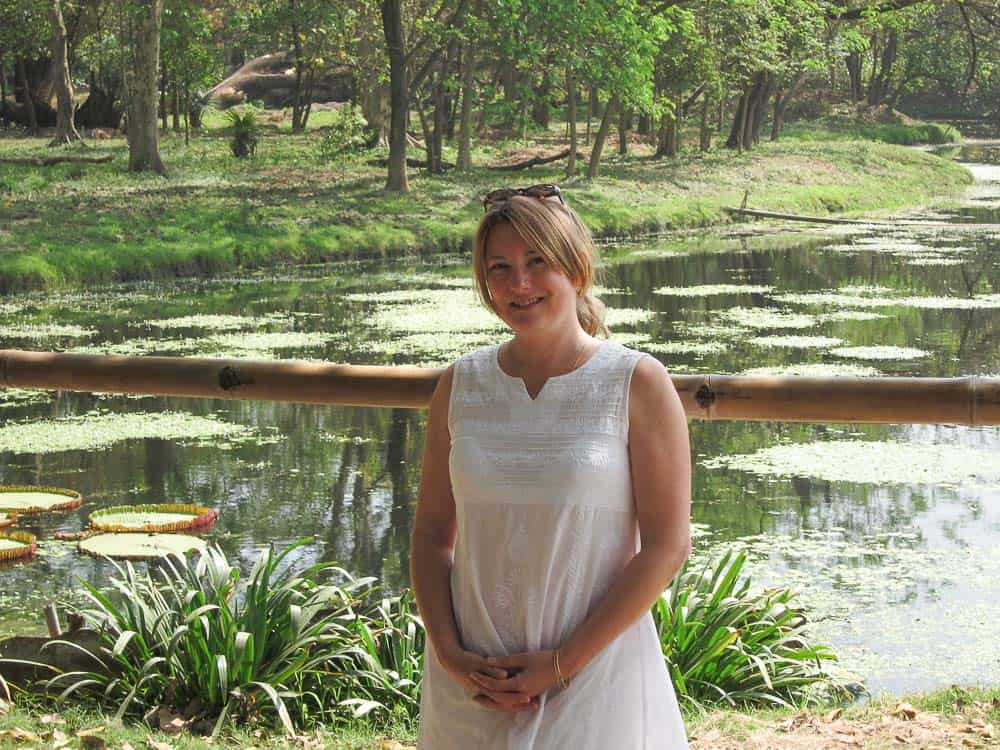
I traveled for about a year in India, altogether, almost always by myself — with no guide, no group, no tour, no accomplice — before visiting Kolkata for the first time in 2010. But in spite of all that experience, I felt like an India newbie in Kolkata. I found the city overwhelming. In Kolkata I felt out of my depths. The city is so immense and sprawling, with every single inch occupied by something or someone, and most of it in a state of decay.
Luckily I was in Kolkata as a guest of India Tourism, and they took care of everything. I was met at the airport by Shrabani, my guide, and later I met Sattarupa of India Tourism. I stayed in a good hotel (the New Kenilworth), that was centrally located, I had a car and driver, and a guide who listened to me. Shrabani and I spent three days driving around the city as I attempted to get a handle on it.
Kolkata is immensely rich in both history and notoriety. It is known for being home to some of the world’s poorest people and one of the darkest moments in British colonial history (from the British perspective): the Black Hole of Calcutta. But also, it was the capital of the British Raj until 1911; it has spawned some of the 20th century’s greatest Indians, such as Sri Aurobindo, Rabindranath Tagore and Satyajit Ray; and it was the inspiration for Mother Teresa to fulfill her potential as a saintly person.
I went to Kolkata with my imagination filled by mythic images and ideas and I think it will take some time for me to process my impressions. I honestly cannot tell whether Kolkata failed to live up to my expectations; or whether it surpassed them to the point of overwhelming satiation. I can say one thing for sure: I have never been anywhere like Kolkata before. At times it reminded me of Havana, at times London, at times other big Indian cities. But it is very unique and I think I would need to spend more time there to appreciate and understand its positive qualities.
I met the Mother Superior of Loreto Convent School when I was in Darjeeling, and she had been in Kolkata for years. She said, “I love Kolkata!” with genuine affection. I was really surprised and curious, and I asked her why. She explained that Kolkata is a very human city; it’s not like a city, but more like a very large small town. She said it reminded her of villages in Ireland where she grew up. “The people are so warm and helpful,” she said. She really gave me pause.
The problem with being a tourist is that you get such a superficial experience of a place. You need to live there to really know it. I love Delhi because I have lived there, and I have got to know it. Kolkata is likely one of those places that grows on you; that you learn to love. Like Delhi, it is not that tourist friendly, not a very easy place. But familiarity with such places often breeds affection.
The highlight of my three days in Kolkata was the morning we went to Dakshineshwar Temple and then took a boat ride on the Hoogly River (the lower Ganges) to get to the Belur Math on the other side, downstream. This temple was at the top of my must-see list: I have come across mentions of it in several places, including the book Autobiography of a Yogi by Paramhansa Yogananda, and it has been recommended to me by many people. I was not disappointed. I found it to be a peaceful, calm and yet intensely spiritual place — which is the perfect ‘energetic mix’ for me.
The main temple is dedicated to Kali, the goddess of Kolkata. The complex also includes 10 Shiva lingams and a shallow pit that was used for animal sacrifice. It also houses a small, simple hut where Ramakrishna meditated before starting his mission proclaiming that all religions are all the same.
I lined up to offer flowers to Kali and lit incense to bless the women of my family (including an as-yet-unborn niece!) and I felt very moved, very emotional. I felt the power of the place. From there we negotiated getting a boat to ourselves to go down the river to Belur Math, which is the extremely well-maintained headquarters of the Ramakrishna Mission. I loved the peace and order of this place, such a contrast to the chaos and decay of much of the rest of Kolkata.
There is a memorial to Vivekananda and a very unique temple that was designed to represent all the world’s great religions. No photography was allowed, so I didn’t get a picture of the temple, but I did sneak a few snaps, much to the chagrin of my guide, Shrabani. She was understandably worried that she would be blamed for my lapse, so I told her her just to walk away and pretend she doesn’t know me.
Another highlight was the short visit we made to Mother Teresa’s home. This moved me more than I imagined it would. I loved the simplicity of the place, and the easy accessibility of her tomb — where, inexplicably, pictures were allowed. I was also quite fascinated to see her tiny, simple room, where she died under a crown of thorns hung on the wall, a religious artifact she had fashioned herself.
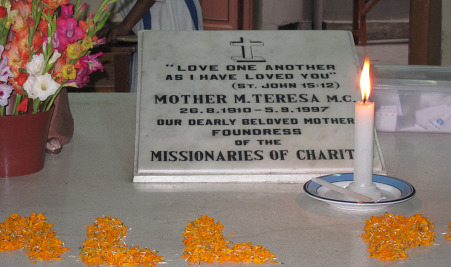
As we were leaving, Shrabani and I were talking to a lovely young nun, wearing the familiar white and blue sari of the Missionaries of Charity, when an old nun, bent over with age walked in, and we all got a start as she bore an uncanny resemblance to Mother Teresa. She also emanated a power that is quite indescribable, but we all felt it. I got chills and really felt moved, for the second time in Kolkata. The first time was at the Dakshineshwar Kali Temple.
The other place I loved in Kolkata was, by chance, across the street from my hotel. One morning just after breakfast I walked over to the Aurobindo Bhavan, without knowing what I would find. Turns out, it was the birthplace of Sri Aurobindo, and it is now a peaceful cultural and meditation centre in honour of the great Bengali thinker and spiritual leader. My teacher, Swami Brahmdev at Aurovalley Ashram near Haridwar is a disciple of Sri Aurobindo’s teachings.
Other highlights of my stay in Kolkata included sampling the famous Bengali sweets — one day, Shrabani and I went to Halidram’s and ate sweets for lunch! — having dinner with Sattarupa from India Tourism at the historic Tollygunge Club, walking around the Victoria Memorial and strolling in the Maidan, and visiting Kumartuli, the area where the figures of Kali and other Hindu gods are made. We walked down several narrow, close streets lined with small workshops where artisans were building the figures that are made of wooden frames, covered with straw and then clay. The final touches are paint and clothing, but when we were there, it was still early in the process. Most of the figures are used during Durga Puja and Kali festivals in the fall.
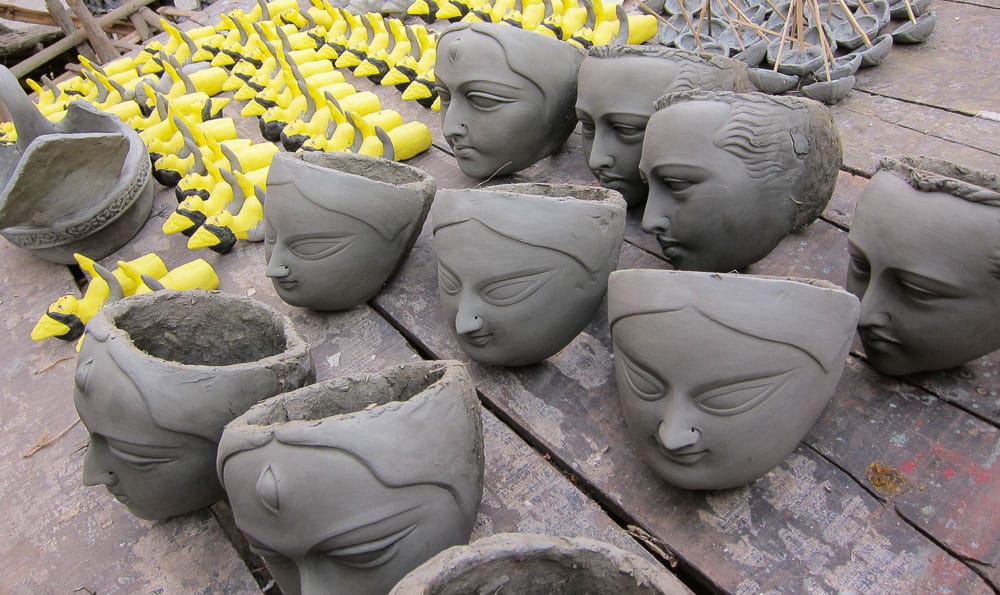
I also went to a Jain temple, Rabrindanath Tagore’s house, shopping for a Bengali cotton sari, and the Marble Palace — which “apparently” houses two paintings by Rubens (among a jumble of other trash and treasures). I saw one called the Marriage of St. Catherine, but I have no idea whether this a real Rubens or not. The collection is housed in an old mansion, and the whole thing has an “it and I have decayed together” air about it, a line from Great Expectations, if you don’t know your Dickens.
No pictures were allowed here either — come to think of it, no pictures were allowed just about everywhere I went! But I walked away from my guide and took a few anyway. I cannot justify breaking the rules … except to say that my intentions were not dishonourable and I have always treated rules as suggestions.
Kolkata is the centre of the tea trade in India. India Tourism arranged for me to meet a tea master. Unfortunately I missed the tea auctions, which have been taking place in Kolkata for at least 150 years, but I had a very nice and informative time at the offices of Contemporary Tea Company, whose tea gardens are in Assam (Diksam Estate). The tea master taught me how to taste tea and I discovered it’s a lot like wine tasting.
I also visited the Botanical Gardens, famous for one of the world’s largest banyan tree, which is estimated to be about 250 years old. The trunk died and rotted away many years ago; all that’s left are the aerial roots.
In retrospect, I cannot believe I packed in so much into two-and-half days! But no wonder I felt so tired, sweaty and grimy at the end of each day. I spent so much time running around, but perhaps not enough time just sitting still and getting to know Kolkata. I don’t regret it. It’s just too bad there wasn’t enough time for me to get a better sense of the people, the place and the culture.
I never got to Kalighat and the main Kali temple. My guide felt it was too crowded and unpleasant. I could have insisted, they would have taken me there … but as always in India I try to be very aware of the signs and signals, and they seemed to be gently dissuading me. Also, I felt completely satisfied with my puja at the Dakshineshwar Kali temple. So, in the end, on my last morning in Kolkata, I chose to go to Sri Aurobindo Bhavan instead. I’m sure Swamiji would be pleased.
While in Kolkata, I was a guest of India Tourism. But as always, views expressed are my own and are in no way influenced by accepting a press trip.
If you enjoyed this post, you can….
Sign up to The Travel Newsletter in the sidebar and follow Breathedreamgo on all social media platforms including Instagram, TripAdvisor, Facebook, Pinterest, and Twitter. Thank you!


